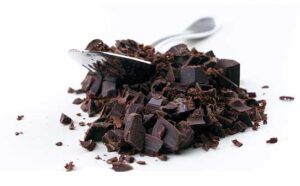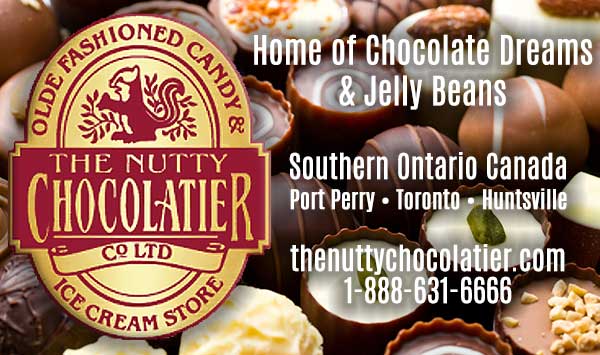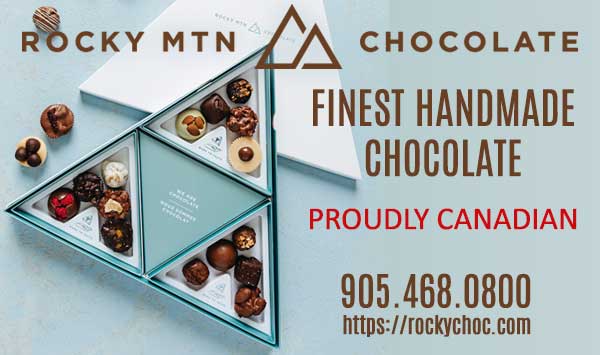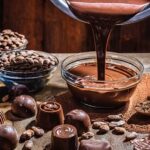 Welcome to Chocabulary 101, where the language of chocolate comes to life! Whether you’re a casual chocolate lover or a connoisseur, this guide is designed to introduce you to the key terms and concepts that shape the world of chocolate. From the origins of cacao to the art of tempering and tasting, Chocabulary 101 will help you decode the delicious vocabulary that makes chocolate so enchanting. Get ready to deepen your appreciation for this beloved treat and master the terms that every true chocolate enthusiast should know!
Welcome to Chocabulary 101, where the language of chocolate comes to life! Whether you’re a casual chocolate lover or a connoisseur, this guide is designed to introduce you to the key terms and concepts that shape the world of chocolate. From the origins of cacao to the art of tempering and tasting, Chocabulary 101 will help you decode the delicious vocabulary that makes chocolate so enchanting. Get ready to deepen your appreciation for this beloved treat and master the terms that every true chocolate enthusiast should know!
 Welcome to Chocabulary 101, where the language of chocolate comes to life! Whether you’re a casual chocolate lover or a connoisseur, this guide is designed to introduce you to the key terms and concepts that shape the world of chocolate. From the origins of cacao to the art of tempering and tasting, Chocabulary 101 will help you decode the delicious vocabulary that makes chocolate so enchanting. Get ready to deepen your appreciation for this beloved treat and master the terms that every true chocolate enthusiast should know!
Welcome to Chocabulary 101, where the language of chocolate comes to life! Whether you’re a casual chocolate lover or a connoisseur, this guide is designed to introduce you to the key terms and concepts that shape the world of chocolate. From the origins of cacao to the art of tempering and tasting, Chocabulary 101 will help you decode the delicious vocabulary that makes chocolate so enchanting. Get ready to deepen your appreciation for this beloved treat and master the terms that every true chocolate enthusiast should know!
A - C
Cabosse
Cabosse refers to the pod or fruit of the cacao tree (Theobroma cacao), which contains cocoa beans used to make chocolate. It has a thick, ridged shell and comes in various colours like yellow, red, and orange when ripe.
Cacao Tree (Theobroma cacao)
The Cacao Tree (Theobroma cacao) is a tropical evergreen tree native to Central and South America. Its pods contain seeds, called cocoa beans, used to produce chocolate, cocoa powder, and cocoa butter. It thrives in warm, humid climates near the equator.
Chocolate nibs
Chocolate nibs are small pieces of crushed cocoa beans, separated from their shells during chocolate production. They have a rich, slightly bitter chocolate flavour with a crunchy texture. Nibs are used in baking, snacks, and as a topping for desserts.
Chocolate Liquor
Chocolate liquor is a thick, smooth paste made by grinding roasted cocoa beans into a liquid form. It contains both cocoa solids and cocoa butter, serving as the base for making chocolate products like dark, milk, and baking chocolates. There is no alcohol in chocolate liquor.
Cocoa Bean
Cocoa beans are the seeds of the cacao tree (Theobroma cacao), found inside its pod-like fruit. They are fermented, dried, roasted, and processed into cocoa solids and cocoa butter, essential ingredients for making chocolate, cocoa powder, and related products.
Cocoa Pod
A cocoa pod is the fruit of the cacao tree (Theobroma cacao), containing cocoa beans used to make chocolate. It has a thick, ridged shell and varies in colour from green to yellow, orange, or red when fully ripe.
Cocoa Powder
Cocoa powder is a dry, unsweetened product made by grinding roasted cocoa beans and removing most of the cocoa butter. It is rich in flavour and used in baking, beverages, and desserts, offering a deep chocolate taste and aromatic profile.
Comfit (Coating Process)
Comfit refers to the process of coating nuts, fruits, or confections with layers of chocolate. This is done using a revolving drum called a panning machine, where items are gradually coated with chocolate until achieving the desired thickness and finish.
Criollo Cocoa Beans
Criollo cocoa beans are a rare, high-quality variety of cocoa beans known for their mild, aromatic flavour. They are prized for their complex taste profile, often used in premium chocolate products, and are typically grown in small quantities.
Crystallization
Chocolate crystallization is the process of cooling melted chocolate to form stable cocoa butter crystals. Proper crystallization ensures smooth texture, shine, and proper snap in chocolate products. It involves controlled temperature to create the ideal crystalline structure for quality chocolate.
Conching
Part of the process by which chocolate is manufactured. Cocoa liquor, cocoa butter and sugar are blended and placed in large agitators fitted with rotating paddles, called ‘conches’ that stir the mixture under heat. These work the paste for several hours at a controlled speed and temperature in order to blend the chocolate correctly. This eliminates any unwanted volatile substances such as the typical acidity of cocoa, and obtaining the ideal amount of fluidity for the processes to follow.
D - F
Dark Chocolate
Dark chocolate is a type of chocolate made with cocoa solids, cocoa butter, and sugar, but without milk solids. It has a rich, intense flavour, often with higher cocoa content, and is considered a healthier option due to its lower sugar content.
Direct Trade
Direct trade in chocolate refers to the practice where chocolate makers buy cocoa beans directly from farmers or cooperatives, bypassing intermediaries. This ensures fair prices for farmers, promotes sustainable practices and allows chocolate makers to source high-quality, ethically-produced beans.
Dragee
A dragee is a confectionery item, typically a nut, fruit, or other food, coated in layers of sugar or chocolate. The coating process involves sugar or chocolate being gradually applied to the center, resulting in a smooth, glossy finish.
Dutch Processing
Dutch processing is a method of treating cocoa beans with an alkaline solution to neutralize their acidity. This process darkens the cocoa, softens its flavour, and creates a smoother, milder taste, commonly used in making cocoa powder for baking and beverages. The name honours the homeland of its inventor, C. J. Van Houten.
Fair Trade Certified
Fair Trade Certified is a label indicating that a product, such as chocolate, meets specific social, environmental, and economic standards. It ensures farmers and workers receive fair wages, safe working conditions, and support for sustainable, environmentally-friendly practices in production.
Fermentation
Chocolate fermentation is the process where harvested cocoa beans, still in their pods, undergo fermentation to develop flavour. Beans are placed in heaps or containers for several days, allowing natural microbes to break down sugars, enhancing the beans’ complex flavour profile.
First Pressing Cocoa Butter
First pressing cocoa butter refers to the initial extraction of cocoa butter from roasted cocoa beans. This method involves applying pressure to the nibs to separate the fat (cocoa butter) from the solids, resulting in high-quality, pure cocoa butter for chocolate production.
Fondant Chocolate
Fondant chocolate is a smooth, sweet confection made from sugar, water, and glucose, often used as a filling or coating for candies and pastries. It has a creamy texture and is known for its ability to melt in the mouth.
Forastero Cocoa Beans
Forastero cocoa beans are the most common and widely cultivated variety of cocoa beans. Known for their strong, robust flavour, they are less aromatic than Criollo beans but are often used in mass-market chocolate due to their higher yield and durability.
G - J
Ganache
Ganache is a rich, smooth mixture of chocolate and cream, often used as a filling, frosting, or glaze in desserts. It is made by heating cream and pouring it over chopped chocolate, then stirring until smooth and glossy.
Gianduia
Gianduia is a creamy chocolate made from a blend of hazelnuts and cocoa. Originating from Italy, it typically contains about 30% hazelnut paste, creating a smooth, nutty flavour. It is often used in pralines, spreads, and chocolate bars.
Grand Cru
Grand Cru refers to the highest quality designation given to chocolate made from exceptional cocoa beans. The term originates from French wine terminology, indicating premium cocoa grown in specific regions with ideal conditions, offering unique and complex flavour profiles.
K - M
Liquid Chocolate
Liquid chocolate is melted chocolate that has been heated to a smooth, pourable consistency. It is commonly used for coating, dipping, or filling chocolates, pastries, and desserts. The liquid texture allows it to be easily moulded or applied in various culinary applications.
Melanger
A melanger is a traditional stone grinder used in chocolate making to refine cocoa beans into chocolate. It grinds the nibs into a smooth, homogeneous mixture by grinding and conching, helping develop the chocolate’s flavour and texture for high-quality products.
Milk Chocolate
Milk chocolate is a type of chocolate that contains milk solids, cocoa solids, cocoa butter, and sugar. It has a creamy, sweeter flavour compared to dark chocolate, with the milk contributing to its smooth texture and lighter taste.
Mocha
Mocha is a coffee-flavoured beverage or dessert made with a combination of espresso, steamed milk, and chocolate. It can also refer to a flavour profile that blends coffee and chocolate, commonly used in drinks, cakes, and other sweet treats.
Moulding
Moulding in chocolate making refers to the process of pouring liquid chocolate into specific moulds to shape it as it cools and solidifies. This method is used to create chocolate bars, pralines, and other chocolate confections with intricate designs and textures.
N - P
Natural Process
Natural process in chocolate refers to the method of processing cocoa beans without the use of alkalizing agents. The beans are fermented, dried, roasted, and ground to preserve their natural flavours, resulting in a more acidic, fruity, and complex taste profile in the chocolate.
Nibs
Nibs are the small, broken pieces of roasted cocoa beans, which are the raw material used to make chocolate. They have a crunchy texture and a rich, bitter flavour, often used in baking, snacks, or as a topping for desserts.
Non-Alkalized Cocoa Powders
Non-alkalized cocoa powders are cocoa powders that have not undergone the Dutch processing method, which neutralizes the natural acidity. These powders retain their original, more intense flavour profile, with a slightly tart and fruity taste, making them ideal for baking and beverages.
Nuts Praline
Nuts praline is a confection made from caramelized sugar and crushed nuts, typically almonds, hazelnuts, or pistachios. The nuts are coated with the melted sugar, creating a crunchy, sweet treat. Praline is often used as a filling or topping in chocolates and desserts.
Oleic Fat
Oleic fat is a monounsaturated fat found in cocoa butter, which is derived from the fat content of cocoa beans. Oleic acid is the primary fatty acid in cocoa butter, contributing to its smooth texture and stability, essential for high-quality chocolate.
Palmitic Fat
Palmitic fat is a saturated fatty acid found in cocoa butter, making up a significant portion of its composition. It contributes to the solid texture of chocolate at room temperature, helping maintain its structure and smooth mouthfeel in various chocolate products.
Patisfrance
Patisfrance is a brand known for producing high-quality pastry ingredients, including chocolate, fillings, and other baking essentials. It provides professional-grade products for pastry chefs, bakeries, and chocolatiers, helping create premium desserts and confections with consistent, excellent results.
Praline
Praline, handmade chocolate refers to artisanal chocolate confections made by hand, often featuring a filling of caramelized sugar and crushed nuts, like hazelnuts or almonds. These chocolates are crafted with attention to detail, offering a smooth, crunchy texture and rich, nutty flavour.
Press Cake
Press cake is the solid byproduct obtained after cocoa butter is extracted from roasted cocoa beans during chocolate production. The remaining cocoa mass is pressed into a dense cake, which is then ground into cocoa powder or used for other chocolate products.
Q - S
Quick Tempering
Quick tempering is a method used to rapidly cool and heat melted chocolate to stabilize its cocoa butter crystals. This process ensures the chocolate hardens with a smooth, glossy finish and achieves the desired texture, snap, and consistency for confections.
Refining
Refining in chocolate making refers to the process of grinding cocoa nibs and other ingredients (such as sugar and milk) to a fine, smooth consistency. This step helps reduce particle size, improving the texture and mouthfeel of the final chocolate product.
Roasting
Roasting is the process of heating cocoa beans to bring out their flavour and aroma. It involves carefully controlling temperature and time to develop the beans’ rich, complex taste. Roasting also helps to loosen the shell, making it easier to separate from the nibs.
Semisweet Chocolate
Semisweet chocolate is a type of chocolate with a moderate level of sweetness, typically containing around 50-60% cocoa solids. It has a balanced flavour, making it ideal for baking, especially in recipes like cookies, cakes, and brownies, where both sweetness and rich cocoa taste are desired
Snap
Snap refers to the characteristic sound and texture when breaking or biting into high-quality chocolate. It indicates the proper tempering of the chocolate, where cocoa butter crystals are well-formed, resulting in a clean, crisp break and smooth, firm texture.
Sweet Chocolate
Sweet chocolate is a type of chocolate that contains a higher proportion of sugar compared to other chocolate varieties. It typically has a sweeter taste and less cocoa content than dark chocolate, making it ideal for confections, candies, and desserts.
T - V
Tempering
Tempering is the process of heating and cooling chocolate to specific temperatures to stabilize its cocoa butter crystals. Proper tempering ensures the chocolate hardens with a glossy finish, smooth texture, and a satisfying snap, making it ideal for coatings and moulds.
Theobromo Cocoa
Theobroma cacao is the scientific name for the cacao tree, the source of cocoa beans used to produce chocolate. The name “Theobroma” means “food of the gods” in Greek, highlighting the tree’s significance in producing cocoa products for culinary and cultural use worldwide.
Trinitario Cocoa Beans
Trinitario cocoa beans are a hybrid variety of cocoa, combining the fine qualities of Criollo and Forastero beans. Known for their balanced flavour, Trinitario beans offer complex, fruity, and floral notes, making them prized in high-quality chocolate production.
Unsweetened Chocolate
Unsweetened chocolate is pure chocolate made from cocoa solids and cocoa butter, without any added sugar. It has a strong, bitter flavour and is typically used in baking, where sweetness is added separately to suit the recipe’s requirements.
W - Z
White Chocolate
White chocolate is a type of chocolate made from cocoa butter, sugar, and milk solids, but it does not contain cocoa solids, which give traditional chocolate its colour and flavour. It has a creamy, sweet taste with a smooth texture, often used in confections and desserts.
Winnowing
Winnowing is the process of separating the outer shells from the inner nibs of roasted cocoa beans. After roasting, the beans are cracked, and the nibs are extracted by removing the husk, leaving behind the nibs, which are used to make chocolate.











